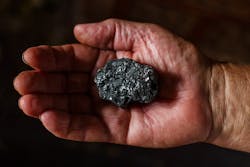About the author:
Cristina Tuser is associate editor of WWD. Tuser can be reached at [email protected].
What is the Flue Gas Desulfurization Process?
Flue gas desulfurization is the process of removing sulphur compounds from the exhaust emissions of fossil-fueled power stations. This is done through the addition of absorbents, which can remove up to 95% of the sulphur dioxide from the flue gas.
Flue gas is the emitted material produced when fossil fuels such as coal, oil, natural gas, or wood are burned for heat or power.
The 2 Types of Flue Gas Desulfurization
The flue gas desulfurization processes can be separated into two main categories:
Once-through processes and regenerable processes.
- Once-through is also known as non-regenerable, and is a process that utilizes the sorbent as a beneficial by-product or disposes of it as waste.
- The regenerable processes release the sorbed sulphur dioxide to generate other products such as elemental S, H2SO4, or liquid SO2.
How to Treat Flue Gas Desulfurization
Flue gas desulfurization is often treated in a dedicated wastewater facility rather than a plant's existing wastewater treatment system, allowing facilities to meet strict FGD wastewater discharge limits. The wastewater composition can vary from plant to plant due to factors including coal selection, scrubber chloride concentrations, the type of gypsum dewatering system, the type of FGD process used and more.
What is Flue Gas Desulfurization Gypsum?
Flue gas desulfurization gypsum (FGDG) is an industrial byproduct generated during the flue gas desulfurization process in coal-fired power plants. Flue gas desulfurization systems have been used to limit the release of sulfur dioxide from coal-fired power plants since the late 1960s, but in the past decade the production of FGDG has drastically decreased.
It may contain pollutants such as particulates, sulfur dioxide, mercury, and carbon dioxide, but most flue gas consists of nitrogen oxides. Untreated flue gas from power plants, industrial facilities, and other sources can significantly impact local and regional air quality.
In a typical treatment process, the gas is first sent to an electrostatic precipitator, which removes ash and other particulates by electrostatically charging them, causing them to be attracted to and deposited on plates or other collection devices.
The gas then moves on to a denitrification unit that alters the chemical composition of nitrogen oxides, producing nitrogen gas rather than nitrogen oxides. Natural gypsum can be used in concrete production as a replacement for calcium aluminate cement (CAC),
FGDG generation has increased in the U.S. but its reuse rate has decreased.
